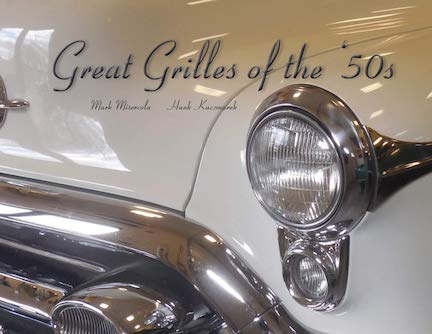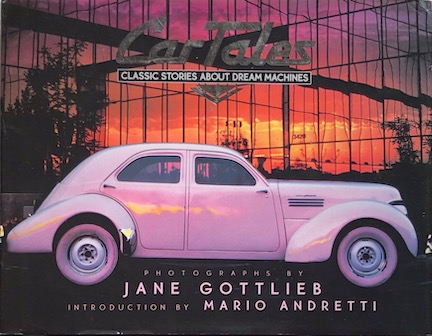Early American Bicycle Works, Exploring the Architecture and Innovation of an Industry
 by Robert L. McCullough
by Robert L. McCullough
“The story of the bicycle’s contributions to American industry, industrial architecture, machine tool technology, and production systems during the late nineteenth century begins with an original invention, expands at an extraordinary pace, declines abruptly, and is condensed into a brief period lasting little more than two decades.”
What do sewing machines, horse-drawn wagons, and bicycles have in common?
Each of you clever souls reading this know the correct answer immediately: one or more of each—multiples of some—begat an automobile maker. But as with those biblical begats, more were spawned than could possibly (much less did) survive.

Industrialists of this era cared as much about how their factories and grounds appeared as the work being done inside. As his successes mounted, Albert Pope built housing for some workers seen top left. He commissioned the most famous landscape architectural firm in America, Frederick Law Olmsted, to design an adjacent park.
This is an aspect of transportation history worthy of being delved into and delve deeply is precisely what Robert McCullough has done with this book. Plus, given his publisher is McFarland, his deep dive is carefully documented with chapter end notes, an appendix, and, of course, a careful, thorough index. Oh, and it’s all printed on acid free archival paper.

This device tests the strength of a bike’s steel tube frame “by applying compression between the bottom bracket and the saddle post socket—until distortion occurred, thus exposing the weakest point of the frame.”
Go back to that opening quote. Think as you reread it just how many different aspects of American life in the late 1800s/early 1900s are written about. With essentially each of the 15 chapters devoted to comprehensively covering a company’s technological breakthroughs and achievements, its improvements in factory design, its factory’s architecture and construction along with introducing its key executives, it’s no wonder that by page 269 McCullough writes “Length of the preceding chapters precludes full consideration of roughly a dozen other surviving factories” following which he does offer a few paragraphs on those most significant, inviting “historians to seek out other surviving examples located in or beyond the boundaries of this study.”

Founder of this company, George Thomas Warwick, was a prolific inventor and patent holder who enjoyed inventing. Paying attention to and managing the affairs of his company wasn’t his priority as is detailed in this chapter. Shown are opening pages.
Then, remembering what some makers of sewing machines, bicycles and horse-drawn wagons have in common, of the bicycle makers who morphed their businesses into the realm of the auto, know that on the pages of this book you’ll read of such as: Albert Augustus Pope, Senior and Junior; another Albert, Albert H. Overman; Henry Abram Lozier, another Senior and Junior pair; and Alexander Winton and others.
“The year Albert Pope . . . began manufacturing Columbia high wheel bicycles . . . dramatically shaped and reshaped American social, cultural, commercial, and industrial history: . . . and set in motion the modern machine and engineering technology essential to the development of automobiles and airplanes.”

Workers commuted by pedaling. Factory owners constructed sheds in which they could park their bikes. Each devised ingenious methods of best utilizing the space. Right-hand page shows exterior of American Rolling Mill bike sheds. Top left is Underwood Typewriter Company interior, bottom is that of Hartford Cycle Company.
The chapter covering ”Emblem Manufacturing Company,” and so titled, notes that Emblem’s “contribution to cycling history is notable, partly because its factory is among the industry’s first to employ concrete construction. . . . Equally important, the company’s origins depart from the familiar pattern of shaky partnerships formed by inventors and local investors.” That early factory building still exists and its rehabilitation is under consideration. Constructed in 1906, it demonstrates the lasting quality of its combination of concrete blocks “which combined load-bearing walls with a partial skeletal-frame of reinforced concrete.” And while you may be unfamiliar with a bicycle named Emblem, “the company manufactured bicycles for several mass retailers, Sears and Roebuck among them.”
Recognizing buildings significant to American manufacture and advocating for their preservation is among this author’s motives for writing. Thus, there is a richness of information and photographs of these buildings inside and out. But also, given that many of these companies, thus their buildings, also played a part in automotive history there’s an even bigger story beyond all on this book’s pages.
Copyright 2025 Helen V Hutchings (speedreaders.info)


 RSS Feed - Comments
RSS Feed - Comments





































































 Phone / Mail / Email
Phone / Mail / Email RSS Feed
RSS Feed Facebook
Facebook Twitter
Twitter